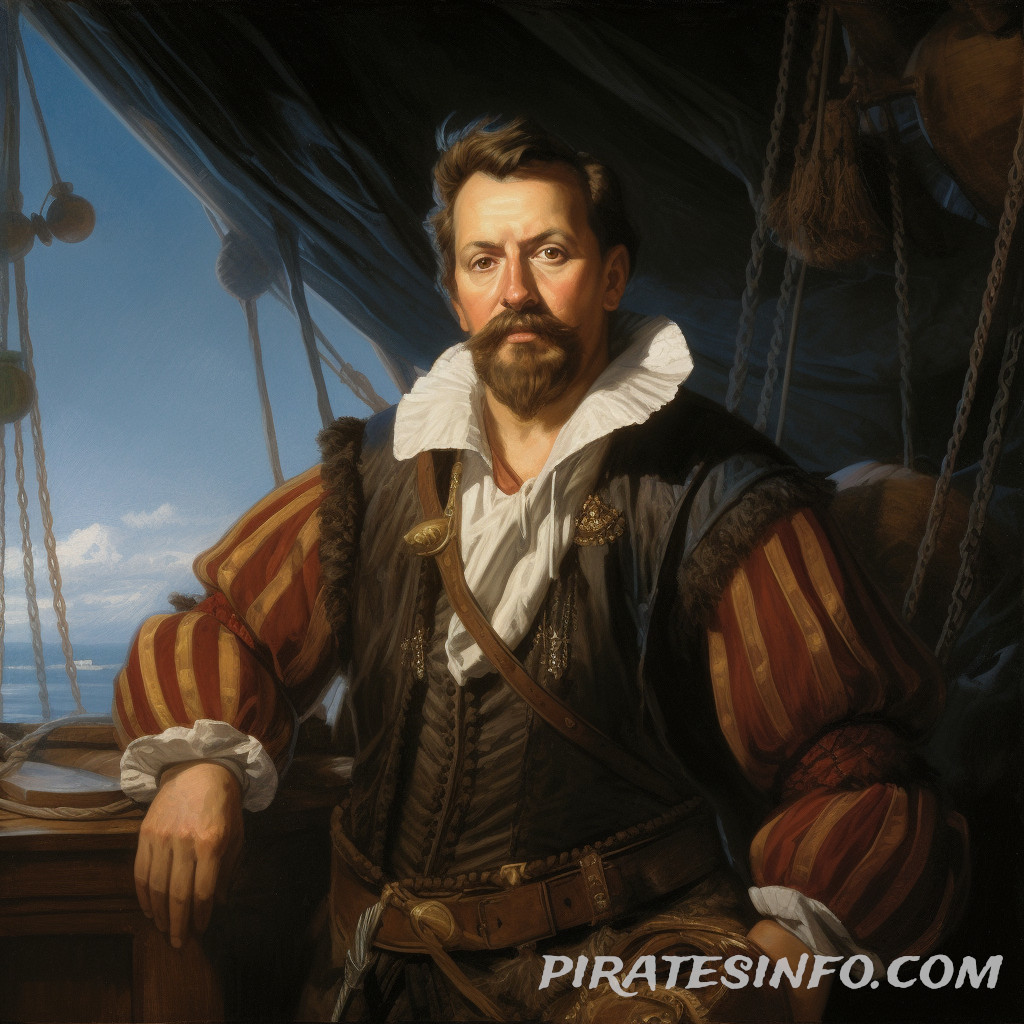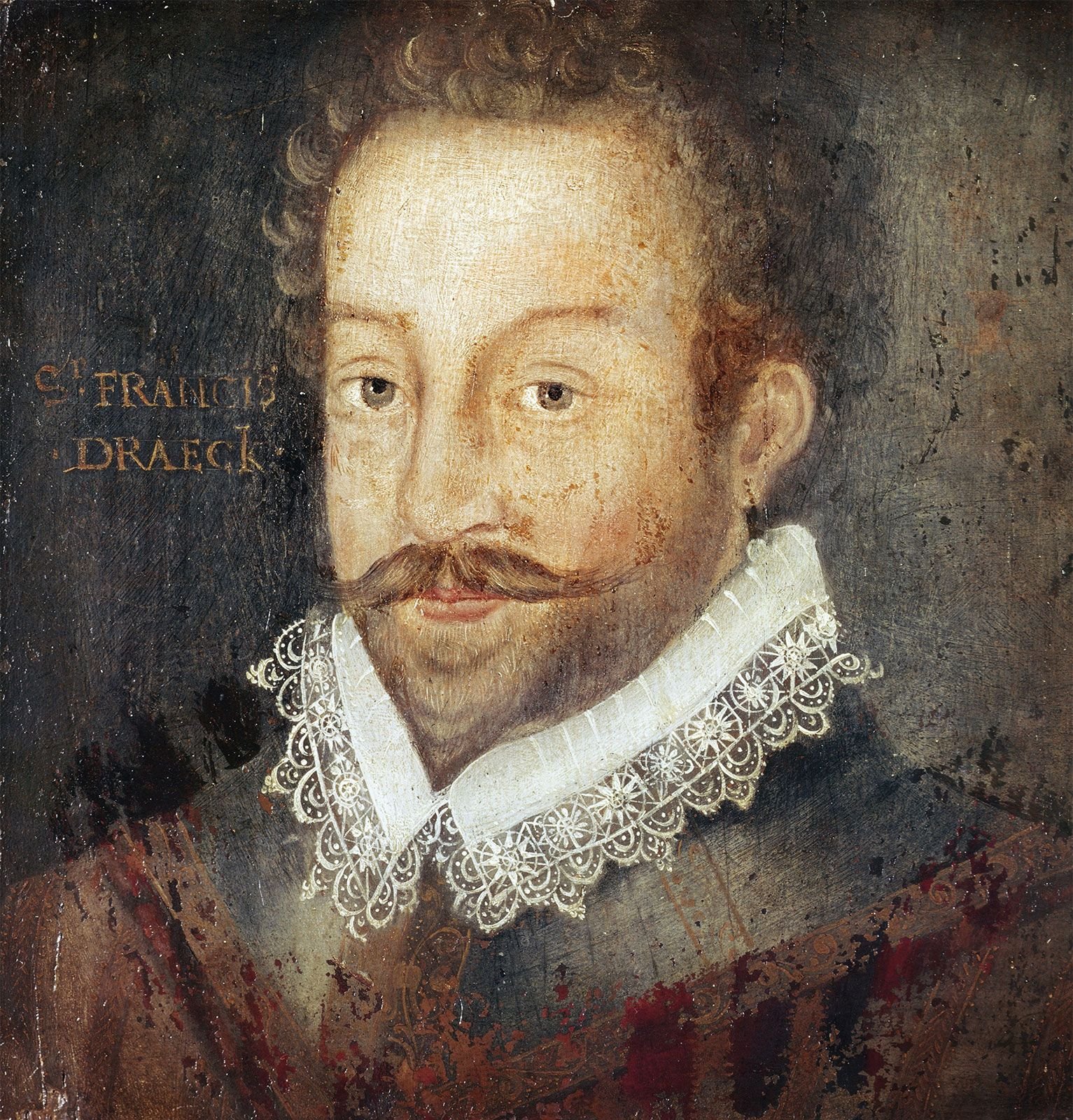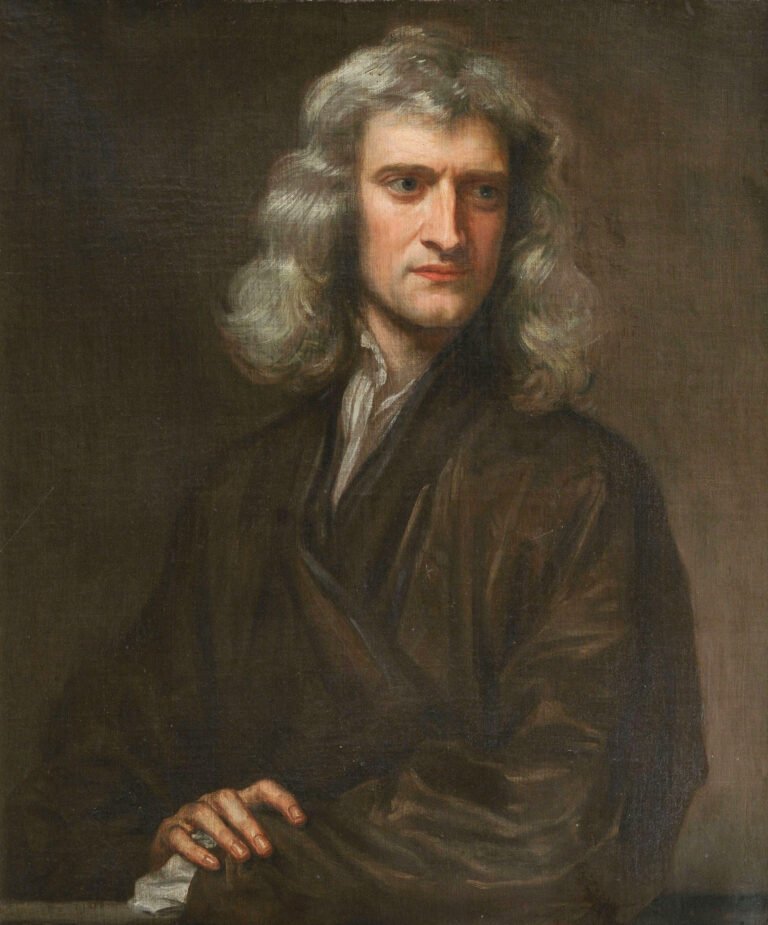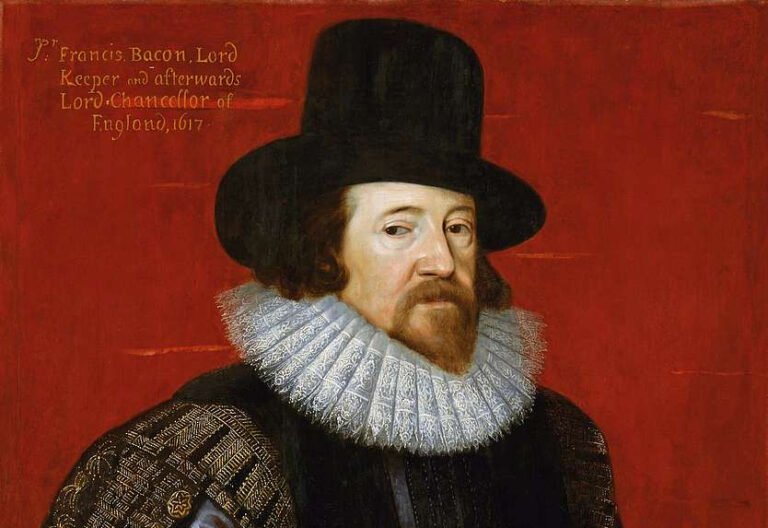Sir Francis Drake remains a legendary figure in history. His name evokes images of daring sea voyages and great adventures.
As an English sea captain, privateer, and explorer, he played a key role in the Elizabethan era. His remarkable achievements have left a lasting impact on maritime history. Born in the mid-16th century, Drake’s life was anything but ordinary. From humble beginnings, he rose to become one of the most feared and respected sailors.
His circumnavigation of the globe and his role in defeating the Spanish Armada are just a few highlights of his storied career. This blog will delve into the fascinating life and legacy of Sir Francis Drake, exploring his adventures, achievements, and the mark he left on history. Join us as we uncover the tale of this extraordinary man.

Credit: www.nps.gov
Early Life
Sir Francis Drake, a renowned English explorer, led a fascinating early life. This period shaped his adventurous spirit and seafaring skills. Let’s delve into his humble beginnings and first sea voyages.
Birth And Family Background
Francis Drake was born in Tavistock, Devon, around 1540. His exact birth date remains unknown. He was the eldest of twelve children. His father, Edmund Drake, was a farmer. Later, Edmund became a Protestant preacher. They were a poor family. They moved to Kent when Francis was young. This was due to religious persecution.
The Drakes lived near the sea. This proximity fueled Francis’s interest in sailing. His cousin, John Hawkins, was a merchant and a navigator. John played a significant role in Francis’s early sea education.
First Sea Voyages
Francis Drake’s first sea voyage occurred in his teenage years. He started as an apprentice on a small ship. The ship’s owner was a neighbor. Drake quickly learned the ropes and became skilled. He soon earned the crew’s respect.
By his early twenties, Drake commanded his own ship. He joined his cousin, John Hawkins, on trading and slaving voyages. These experiences hardened him. They also provided valuable navigation skills.
He faced many dangers during these voyages. He battled hostile forces and survived harsh conditions. His bravery and leadership qualities emerged early on.
| Year | Event |
|---|---|
| 1540 | Born in Tavistock, Devon |
| 1550s | Moved to Kent |
| Mid-1550s | First sea voyages as an apprentice |
| 1560s | Commanded own ship and joined cousin John Hawkins |
These early experiences laid the foundation for Drake’s legendary career. They prepared him for future challenges and triumphs.
Rise To Prominence
Sir Francis Drake’s rise to prominence marked a significant period in English history. His daring exploits and navigation skills made him a legendary figure. He earned fame under Queen Elizabeth I, embarking on key early expeditions that shaped his legacy.
Service Under Queen Elizabeth I
Drake served under Queen Elizabeth I during a time of intense maritime competition. The Queen supported his voyages, seeking to expand England’s influence. Drake’s loyalty and success brought him the Queen’s favor. His ventures were crucial in challenging Spanish dominance at sea. He became a national hero, celebrated for his bravery and achievements.
Key Early Expeditions
Drake’s early expeditions laid the foundation for his fame. One notable mission was his voyage to the Caribbean. He raided Spanish ships and settlements, gaining wealth and experience. Another significant journey was his circumnavigation of the globe. This feat showcased his exceptional navigation skills and courage. These expeditions solidified his reputation as a formidable explorer and privateer.
Circumnavigation Of The Globe
Sir Francis Drake’s circumnavigation of the globe was a historic voyage. Between 1577 and 1580, Drake became the first Englishman to sail around the world. His journey was filled with dangers, discoveries, and remarkable achievements. This part of his life remains a significant chapter in maritime history.
Preparations And Challenges
Before setting sail, Drake meticulously prepared for his voyage. He gathered five ships and a crew of experienced sailors. They stocked provisions, weapons, and supplies for the long journey ahead. The fleet’s flagship was the Pelican, later renamed the Golden Hind.
Drake faced numerous challenges during the voyage. Harsh weather conditions tested the crew’s endurance. Navigational difficulties required constant vigilance and skill. The threat of hostile encounters with foreign ships and indigenous peoples was ever-present. Despite these obstacles, Drake’s leadership and determination kept the expedition on course.
Notable Stops And Discoveries
Drake’s voyage included several notable stops and discoveries. In South America, the fleet navigated the treacherous Strait of Magellan. This passage was crucial for reaching the Pacific Ocean. In present-day California, Drake claimed land for England, naming it New Albion.
The expedition also explored the spice-rich islands of Southeast Asia. They traded for valuable goods, adding to the wealth of the voyage. In the Indian Ocean, Drake captured a Spanish treasure ship, boosting the crew’s morale and resources. Each stop brought new challenges, but also opportunities for discovery and profit.
Drake’s circumnavigation of the globe remains a testament to human courage and exploration. His journey paved the way for future maritime expeditions. It demonstrated the vastness and interconnectedness of the world.

Credit: www.piratesinfo.com
Conflict With The Spanish Empire
Sir Francis Drake played a key role in England’s conflict with the Spanish Empire. Known for his daring raids, he disrupted Spanish fleets and seized treasures, weakening Spain’s naval power.
Raids On Spanish Ports
Sir Francis Drake was known for his daring raids on Spanish ports.
His strategic attacks greatly disrupted Spanish naval operations.
The Spanish Armada
Drake played a pivotal role in defeating the formidable Spanish Armada.
His naval expertise and tactical brilliance were instrumental in the victory.
Impact On Maritime Warfare
Sir Francis Drake had a profound impact on maritime warfare that reverberated through history.
Innovations In Naval Tactics
Drake introduced new strategies that revolutionized naval warfare.
He pioneered the practice of hit-and-run tactics, maximizing damage while minimizing risk.
Influence On Future Naval Commanders
Drake’s bold leadership inspired future naval commanders to adopt his daring approach.
His legacy shaped the way naval battles were fought for generations to come.
Legacy And Honors
Sir Francis Drake, the famed English sea captain, left an indelible mark on history. His daring exploits and contributions have been recognized worldwide. Let’s explore the legacy and honors of this legendary figure.
Titles And Recognitions
Queen Elizabeth I knighted Drake in 1581. This honor acknowledged his services to England. He became Mayor of Plymouth, reflecting his local influence. Drake’s knighthood was a high mark of royal favor. It showed his importance in the eyes of the monarchy.
Drake also received the title of Admiral. This title recognized his naval prowess. His leadership helped England’s navy grow stronger. Drake’s titles and recognitions highlight his significant impact.
Cultural Depictions
Drake’s life has inspired many stories and legends. He appears in numerous books and films. These works portray him as a fearless explorer. His character often embodies bravery and adventure.
In literature, Drake is a popular figure. Writers often depict his voyages and discoveries. His role in defeating the Spanish Armada is a common theme. This event is a key part of his enduring legacy.
Drake’s impact extends to plays and music as well. The arts continue to celebrate his remarkable life. These cultural depictions keep his memory alive for future generations.
Controversies And Criticisms
Sir Francis Drake, the famous English sea captain, explorer, and pirate, is a figure of historical significance. Yet, his life was not without controversy. Many view his actions through a critical lens. They question his motives, methods, and the ethics behind his expeditions.
Piracy Accusations
Drake was often accused of piracy. He raided Spanish ships and ports. These actions earned him the title of pirate in the eyes of Spain. The Spanish Crown even placed a bounty on his head. Drake’s voyages brought great wealth to England. Yet, they did so at the cost of violence and theft.
Many of his raids were unprovoked. He attacked with little warning. His fleet seized valuable cargo and left destruction behind. The Spanish, and some historians, argue his actions were criminal. They believe he used piracy as a mask for his greed.
Ethical Debates
Drake’s actions also spark ethical debates. Was he a hero or a villain? His supporters see him as a brave explorer. They praise his role in defeating the Spanish Armada. They view his plundering as a necessary evil. For them, it was a way to weaken a powerful enemy.
Opponents argue that his methods were cruel. They point to his treatment of indigenous people. Drake often used force to get what he wanted. Some say he was no better than the pirates he fought against. His expeditions left a trail of suffering and loss.
These debates highlight the complexity of his legacy. Was he a national hero or a notorious pirate? The answer may depend on perspective. What is clear is that his life was full of controversy.

Credit: www.history.com
Final Years And Death
Sir Francis Drake, the legendary English sea captain, lived a life full of adventure. His final years were as eventful as his earlier exploits. He embarked on more voyages, faced challenges, and ultimately met his end. This section delves into the last chapter of his life.
Last Expeditions
In 1595, Drake joined forces with Sir John Hawkins for another expedition. Their goal was to raid Spanish settlements in the Caribbean. Unfortunately, the mission did not go as planned.
The fleet encountered fierce resistance. Spanish forces were well-prepared and stronger. Drake’s health began to decline during this period. The once-invincible sailor was now facing the limitations of age and illness.
Despite the setbacks, Drake remained determined. His spirit never wavered, even as the expedition faced numerous hardships. His passion for exploration and adventure was evident until the very end.
Death And Burial
On January 28, 1596, Sir Francis Drake succumbed to dysentery. He passed away near Portobelo, Panama. His crew honored his final wish.
Drake was buried at sea in a lead coffin. The burial took place close to the coastline where he had fought many battles. The exact location of his grave remains unknown to this day.
His death marked the end of an era. Drake’s legacy lives on, remembered as one of the greatest sailors in history.
| Year | Event |
|---|---|
| 1595 | Last Expedition with Sir John Hawkins |
| 1596 | Death and Burial at Sea |
Drake’s final years were filled with unwavering determination and adventure. His contributions to maritime exploration and England’s naval supremacy are unforgettable.
FAQs
Who Was Sir Francis Drake?
Sir Francis Drake was an English sea captain, privateer, and explorer. He played a crucial role in defeating the Spanish Armada in 1588.
What Is Sir Francis Drake Famous For?
Sir Francis Drake is famous for circumnavigating the globe. He was the first Englishman to do so between 1577 and 1580.
Did Sir Francis Drake Defeat The Spanish Armada?
Yes, Sir Francis Drake helped defeat the Spanish Armada in 1588. His tactics and leadership were instrumental in the victory.
Where Was Sir Francis Drake Born?
Sir Francis Drake was born in Tavistock, Devon, England. His birth year is around 1540.
Conclusion
Sir Francis Drake’s legacy lives on through his daring voyages. His courage and determination continue to inspire. Drake’s impact on history is undeniable. He remains a symbol of exploration and adventure. His life teaches us about resilience and ambition. These qualities are timeless and valuable.
Remember his story when facing challenges. It shows the power of persistence. Drake’s journey is a testament to human spirit. Explore, dream, and discover like Sir Francis Drake.








